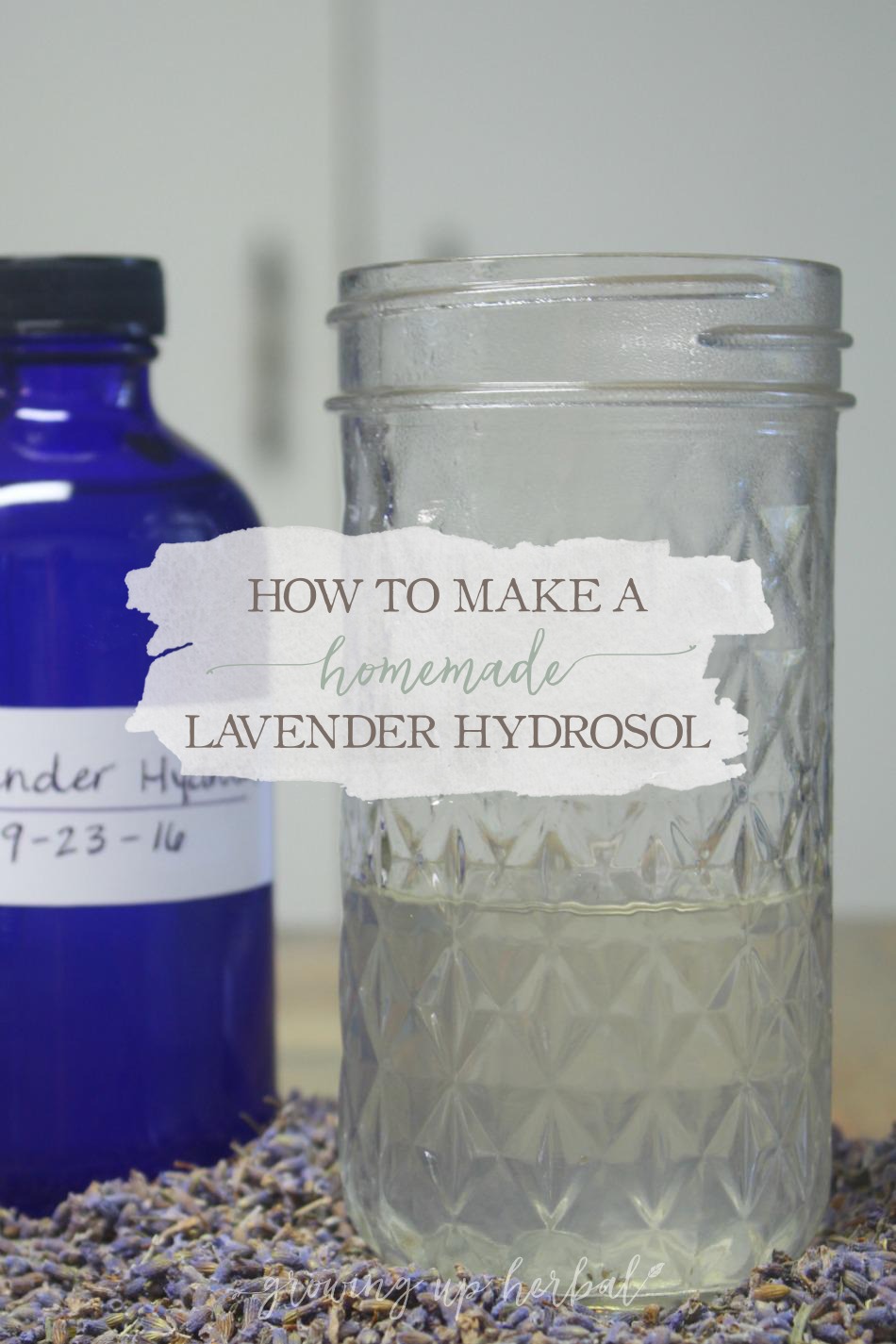
I’ve been using herbs for 10 years now, and I’ve never made a homemade hydrosol of any kind. Can you believe it?
Sure I’ve bought hydrosols and used them in DIY skin care products before, but I’ve never actually made my own hydrosol from scratch. I suppose I had preconceived ideas about homemade hydrosols. I either thought they were too difficult to make at home or that they would be of low-quality if I made them myself. Thankfully, after doing a bit more research on hydrosols, my confidence in homemade versions has increased, and I’ve been inspired to start making my own when I need them.
BTW, have you ever priced a yarrow hydrosol? Gasp! Talk about expensive! Making your own homemade version is totally worth it!
Today, I want to show you how to make your very own homemade lavender hydrosol in the comfort of your own home. Lavender is one of the most readily available herbs there is which makes this an inexpensive hydrosol to make. Plus, it can be used in so many ways. Lavender is very versatile!
What Is A Hydrosol
A hydrosol is a milky looking water that results from steam-distilling herbs. This water not only contains small amounts of essential oil but also the water-soluble properties of the plant material.
Hydrosols are very safe for most people, and they can be used in a lot of different ways ranging from linen spray, to the liquid portion of skin care products, as a facial toner, in baths, as a body spray, and more. They are commonly used externally, but they can be used internally as well.
One thing I recently learned about hydrosols was that they have a relatively long shelf-life compared to most water-based products. Most hydrosols have a shelf-life of 18-24 months, depending on the herb, of course, and as usual, refrigeration can extend the shelf-life.
How To Make A Homemade Lavender Hydrosol
To make your homemade lavender hydrosol, start by gathering your supplies.
You’ll need:
- a large pot (I use my stainless steel stock pot)
- trivet (a heat-stable bowl, large rock, or brick will work too)
- bowl
- 10-ounces of fresh lavender by weight (5-ounces of dried lavender)
- 3 quarts of distilled water
- ice (lots of ice!)
Next, place the trivet inside your pot and place the herbs and water around the trivet, making sure to saturate the herbs (especially if using dried herbs) well. Place your bowl on the trivet in the center of the pot. This will be where your finished hydrosol will collect.
Next, flip your lid upside-down and put it on the pot. Add ice to the lid, and turn the heat on medium-high. The heat at the bottom of the pan will cause the water and herbs to heat up, releasing steam (and your house will start to smell amazing!). When the hot steam hits the cold lid, it will cause the steam to condensate on the lid. This condensation is your hydrosol. Because the lid is upside-down, the condensation will drip into your bowl. It’s nice to have a little helper working to collect water during this process, but if you want to avoid a melted water mess, put your ice in a gallon sized plastic baggie and swap it out for a new one when all the ice melts.
After 20 minutes, you should have a good amount of hydrosol collected in your bowl. CAREFULLY remove the lid and set aside. CAREFULLY remove your bowl and transfer your finished hydrosol to a glass measuring cup or anything that makes it easier to pour. Finally, pour your hydrosol into a jar for storage. Be sure to label and store your jar properly.
How To Use A Lavender Hydrosol
Your homemade lavender hydrosol will have a lot of the same therapeutic properties the herb has.
Lavender hydrosols can be used to:
- relieve mild pain
- discourage microbial growth
- decrease inflammation
- cool the skin
- calm the mind
- stimulate digestion
- thin mucous in the lungs
- relax the body
- stimulate energy
- and more.
Keep in mind that most herbs work gently to bring the body back into a state of balance. For example, if you have a fever and your body is tense and hot, lavender hydrosol can help calm the mind, relax the body, and bring cooling to the surface of the skin. On the other hand, if you lack energy, lavender hydrosol can bring warmth and stimulation to the mind and body. This may seem contradictory, but the more you learn about herbs and how they work, you’ll see how they work best to center and balance the body when it’s off.
One of the easiest ways to use your lavender hydrosol will be to put it in a bottle with a spray cap. You can then use them anytime you are cleaning a cut or scrape, when your child gets a bug bite, to spritz on your sheets before bed, to clean the makeup off your face, to cool a burn, to clean baby’s diaper area, and so much more.
As you can see, a homemade lavender hydrosol has a lot of different uses!
So there you go! I hope you’ve enjoyed this homemade lavender hydrosol tutorial, and I hope it gives you the confidence to try making one on your own.
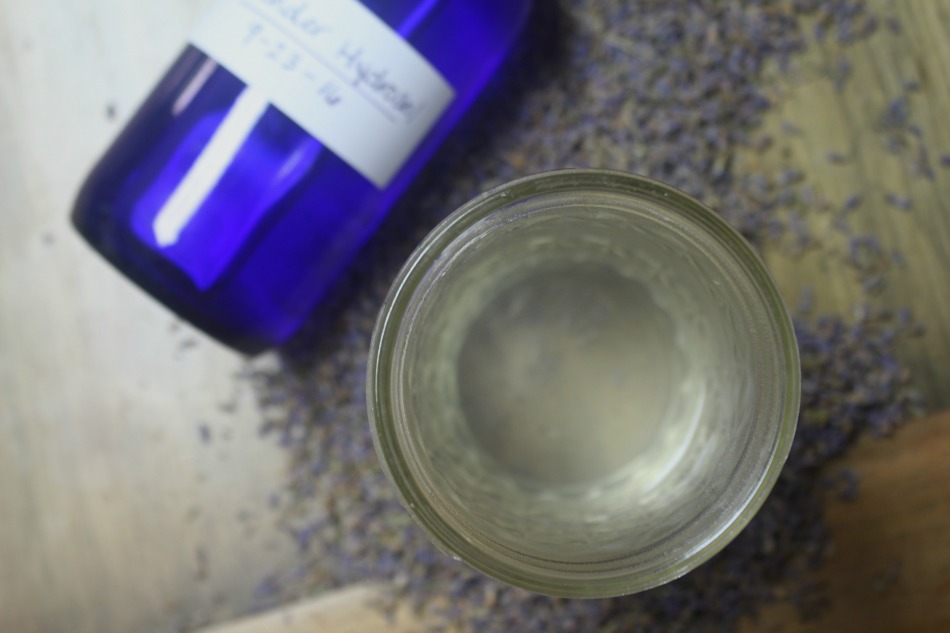
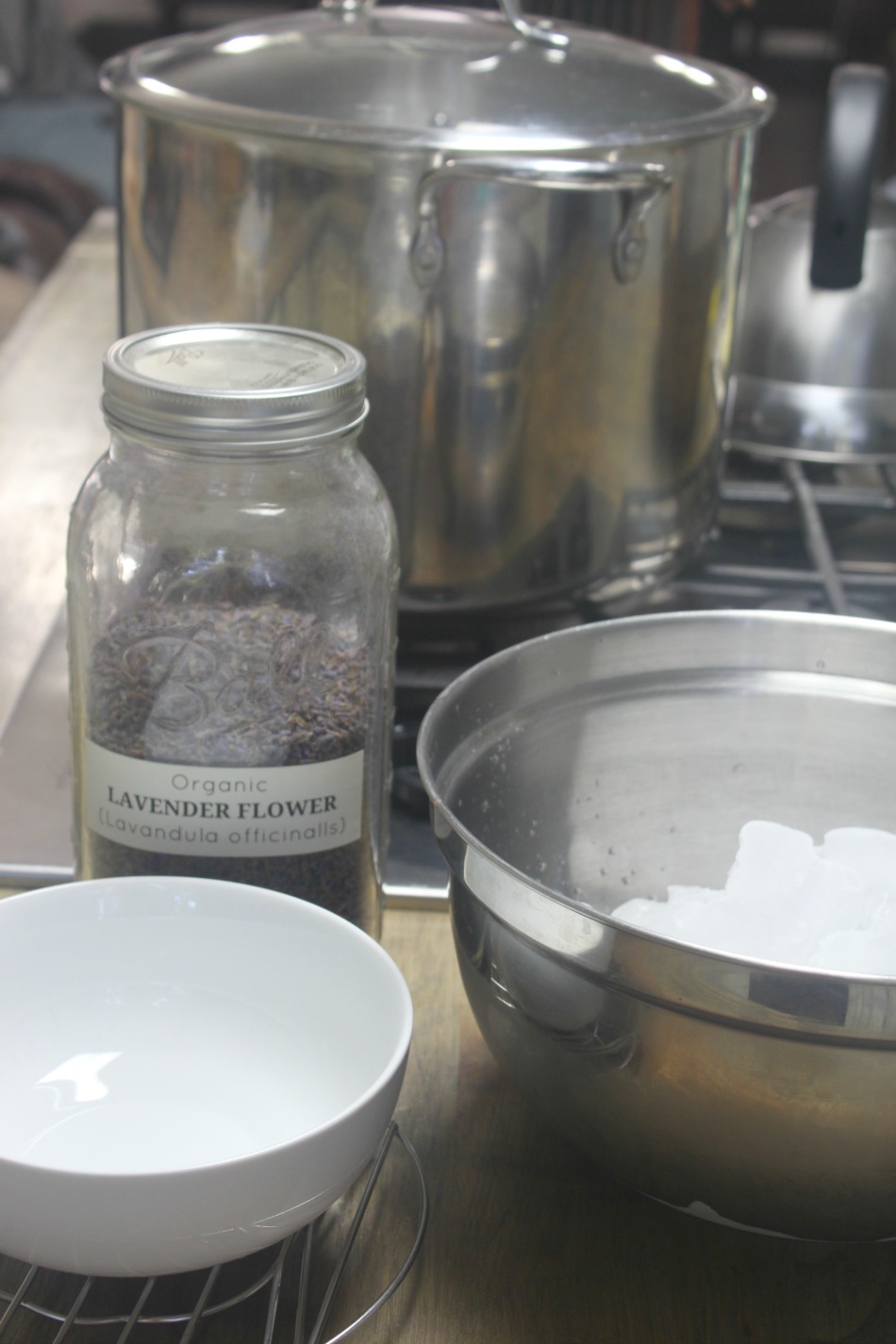
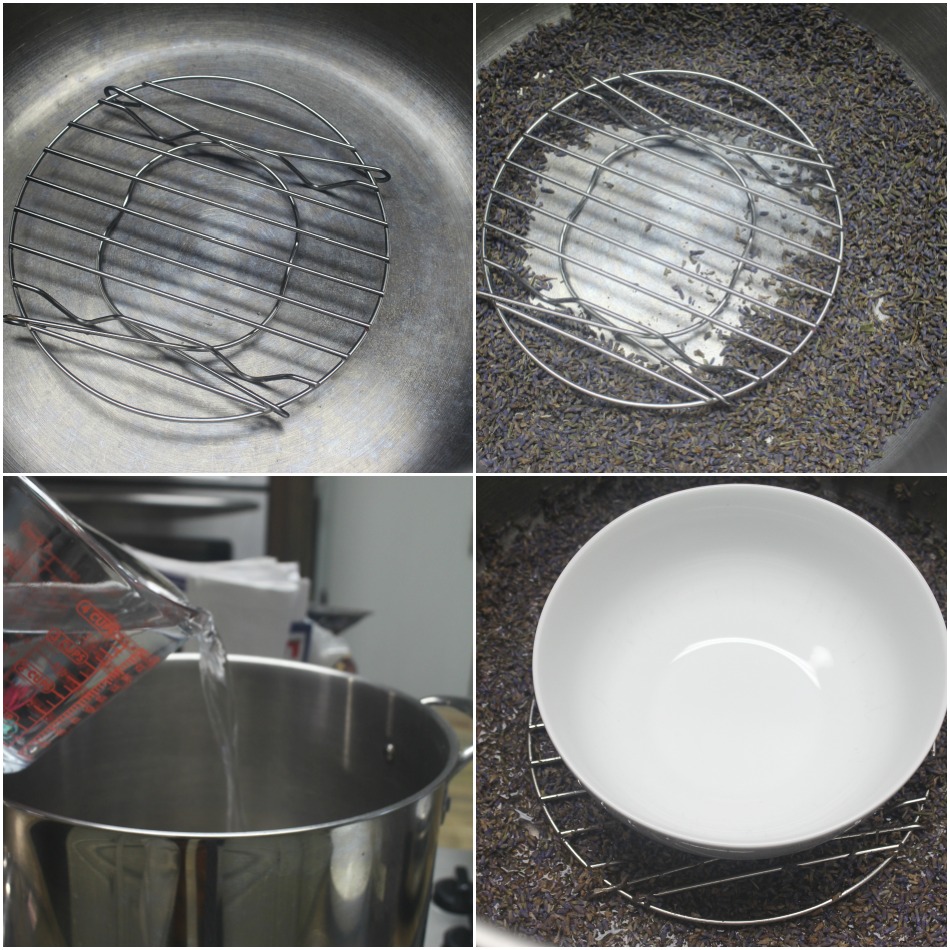

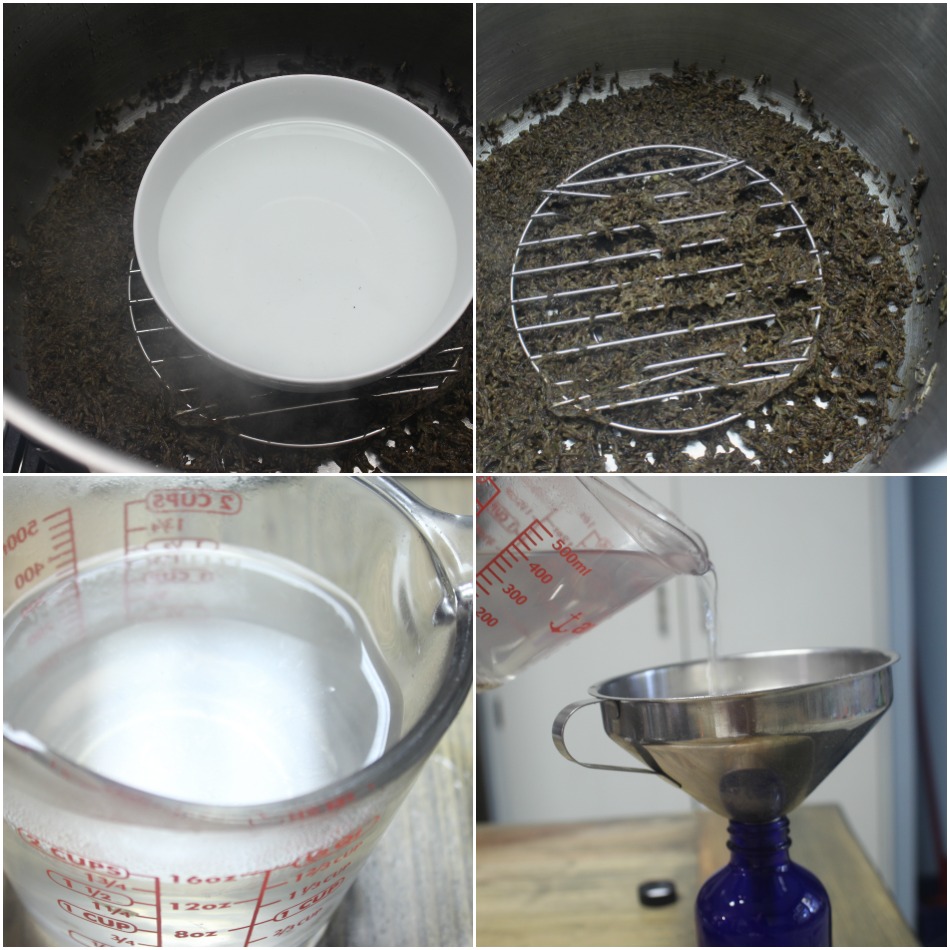
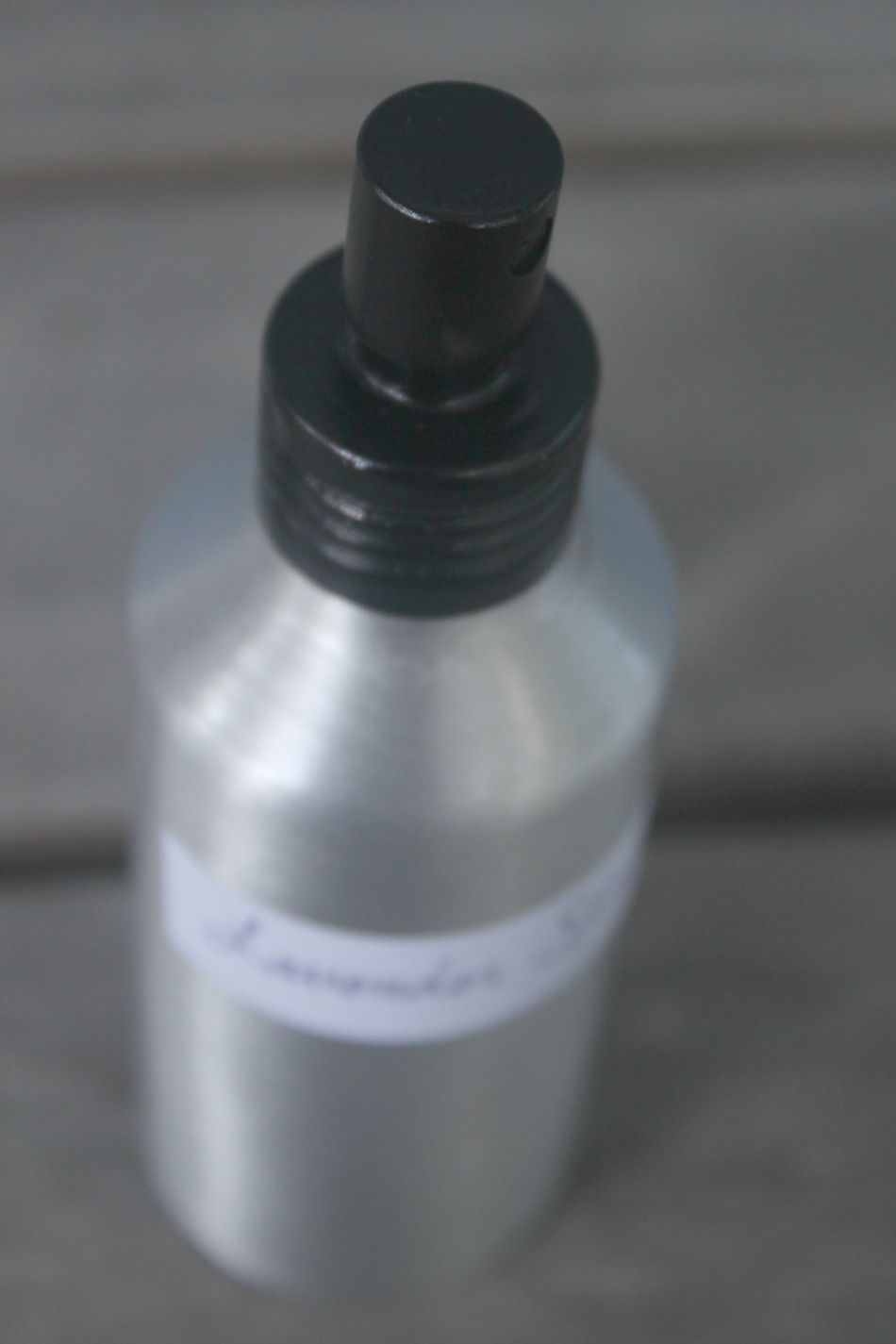
Can you make other hydrosols the same way with other herbs (like yarrow, for example)?
Yes, Joan! You totally can!
Awesome! I was just going to ask the same thing! I have some Calendula, so I might have to give it a try! Thanks!
You’re very welcome! If you do end up making a calendula one, you can use it in the calendula herb challenge!
Thanks for the inspiration, can’t wait to try this!
Hope it works well for you! I’m sure you’ll love it as much as I do!
This is such awesome information. Thank you so much Megan!!!
You’re very welcome! I’m glad you enjoyed it, Linda.
I love this tutorial! I use rose hydrosol with my face oil morning and night. I’ll have to give this a try. Thanks!
Would you use the lavender stems as well?
Sure thing, Jeanne. You can definitely use the stems.
Hi, Meagan,
May I use rose petals that are ready to be tossed (old) to make my Rose Hydrosol?
You certainly can, Jean, but keep in mind that your hydrosol may not have as many beneficial properties as one made with newer rose petals.
Can I use tap water instead of distilled water?
Thanks!
If your tap water is free of added chemicals then it should be fine, Kathie. Thanks for your comment!
What’s the shelf life on this?
Professionally made hydrosols usually have a shelf-life of a year in the fridge. Homemade versions will probably be a bit shorter, but not too much. If it starts getting cloudy or moldy, throw it out. Otherwise, it should be good for 6-12 months when stored in the fridge.
About how much hydrosol is accumulated from this process with 3 quarts of water? So excited to try this out!
I think I got around 8-10 ounces from this. I haven’t made it for a while, but I’m close to running out so the next time I make it, I’ll pay attention to how much it yields and update the post. Thanks for your comment, Heather!
5
Hello Megan,
Can I make this water with just the leaves since my lavender plant has no buds right now?
You could, but I’m not sure it would be as strong as it would be if you used lavender buds as that is where the majority of the volatile oils are located. If you’re okay with that possibility, I’m sure it would be very useful and smell lovely!
Would this work with say lemon or orange peels?
I would think so, as far as making a hydrosol goes. You may want to chop the peel or grate it first in order to better release some of the oils, though. I’ve personally never tried it so I’d love to hear how it goes for you if you do it.
4.5
In making lavender hydrosol do you use flowers only or are the leaves good for making something… They are pretty fragrant on their own
I believe you can use both, although the flowers will contain more of the volatile oils.
[…] her excellent recipe, I’ve made a few batches already. And one in the works now. I started with lavender, not only […]
Found this today – was looking up what a Hydrosol was – thank you for the fantastic post – I am going to use it to make a shampoo for my little fur baby who has started to lick her feet – now must just find a lavender plant.
So glad it was helpful, Maria, and good luck making your shampoo with it. That’s a great idea, and I think I’ll try it the next time I make some!
what can i use the remaining flowers for after making my hydrosol? it seems like a sad waste to just toss them!
I get that, but you’re not really wasting them. You’ve pulled the majority of their water-soluble benefits into your hydrosol so there’s not much left in the flowers themselves. One thing I like to do with leftover herbs from water or oil infusions is to compost them so they can break down and my plants benefit from them. At least that way you’re not just throwing them away. Hope that helps!
my lavender water is an amber color. did i do something incorrectly?
also, the water that is not in the bowl but in the pit with the lavender flowers, do i just discard that?
Thanks!
Hmm, I’m not sure. Mine has always been a cloudy-white color, but I would imagine the longer you keep it over heat, the more color comes into the liquid. I wouldn’t throw it away, though. I’d still use it. If you make a new batch, and it turns out the same way, it could have something to do with the type of lavender you are using that’s giving it more color.
Me too, more of an amber color. Seems okay?
Meagan, thank you for making this post. I thought hydrosols would be difficult but this looks so simple. I have several lavender bushes that need trimming yearly (they are very happy) and I can’t GIVE it away. I guess people are too busy to care. I’m slowly discovering uses for it. I throw some Spanish lavender in our chicken coop. The English lavender I have made into wands. Now I can make hydrosol! My skin gets flushed, so this may be a good spray. How do you use it to remove make up? What’s your process?
I don’t really use it to remove makeup as I’ve found soap-based cleaners to work better for me. Rather I use it as a toner after removing my makeup. I also use it as a setting spray after I’ve put my makeup on or anytime my face feels dry. I like to use it as a linen spray on my bed at night or even to spritz in your car to freshen the smell. I also use it as the water portion when I make body creams from time to time. Hope that helps!
Hi Megan,
Before I saw your recipe I made some lavendar hydrosol but failed to put the ice on top of the lid. It seemed okay to use, but I am wondering if I would get a better product using the ice.
I’m sure it’s fine, Jo. I think the ice just helps to speed things up. Maybe try it with ice next time and see how long it takes you compared to not using ice.
Did you make the ice from the distilled water? Do you have to keep adding water to the bottom of the pot ?
You can make the ice from any kind of water you’d like as it does not come into contact with the material inside the pot. And no, you don’t have to keep adding water to the inside of the pot. When there is minimal water in the bottom of the pot, you should have enough finished hydrosol in the bowl. If you want to make a larger amount of hydrosol, you can double all ingredient amounts to start with (just make sure you have a large enough bowl inside the pot) or make two separate batches. Does that answer your questions?
This is a great find! I have been making my own sprays with distilled water, few drops oils, and a splash of vodka or witch hazel (as a preservative and help for emulsification). I do love these sprays but I have been wanting to make fresh products with herbs from my garden. This seems just what I need. I plan to use a frozen block of ice on the top – for travel in coolers, I freeze water in old drink containers. That way if it melts, it remains in the old bottle. Thank you! ?
Yes, that’s a great idea! I’ve been putting my ice cubes in gallon-size baggies to contain the water, and that’s been working really well. Good luck with your blocks of ice. I’m sure that will work just as well.
This is a great resource – thank you! I would like to learn more about preservatives and ratios. Do you know what type and quantity of preservative is best?
I’m not too familiar with preservatives as I don’t often use them, but the Herbal Academy has an amazing workshop all about it! You can check it out here.
What can you do with the herbs once this is done – are they really all used up? And what if there is still water left in the bottom of the pan? Thank you for your helpful post!
You could squeeze the water out and mix it with some honey to make a lavender (or whatever herb you’re using) syrup. You could then take the herbs and simmer them in some milk to make a lovely evening drink (this works particularly well for relaxing nervines or sedative herbs).
Dont i ned any form of preservative, to make it
You don’t have to have a preservative if you store it in the refrigerator and use it in 1-2 weeks. However, you can add a natural preservative to it to make it last longer. Just follow the directions on the preservative’s label to know how much to add to it.
I have wanted to do this for some time. Thanks for your clear instructions. I’m disappointed with the output. I don’t think I have even one cup of hydrosol in my bowl and I left it on the stove for an hour and it just doesn’t have any fragrance of lavender at all. Also it’s just clear, not milky.
An hour seems like a long time. Mine are ready in 20-30 minutes, and they typically have a hazy, milky appearance and a light scent. The long heating time likely caused too much steam to escape along with the volatile oils that end up in the finished hydrosol and give it its scent. Maybe try it again with a shorter heat time and see if that turns out better.